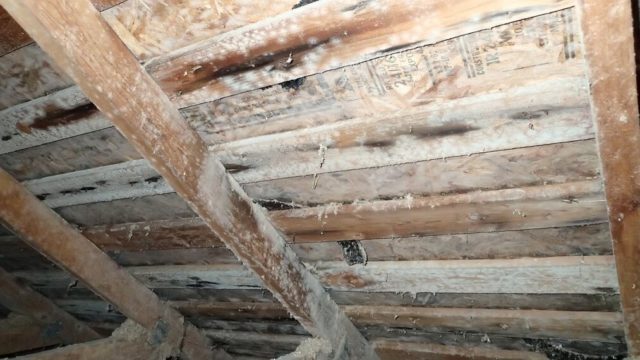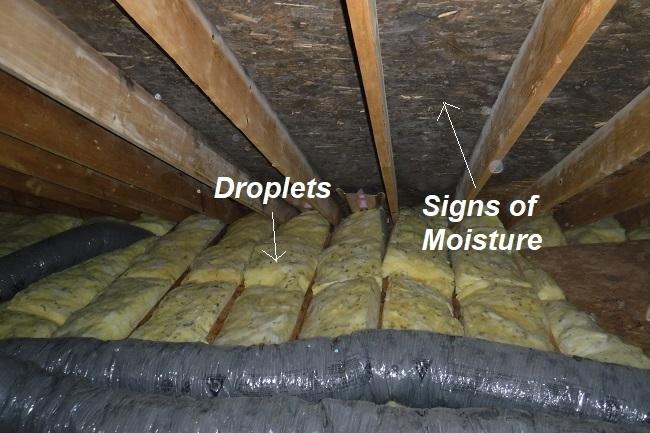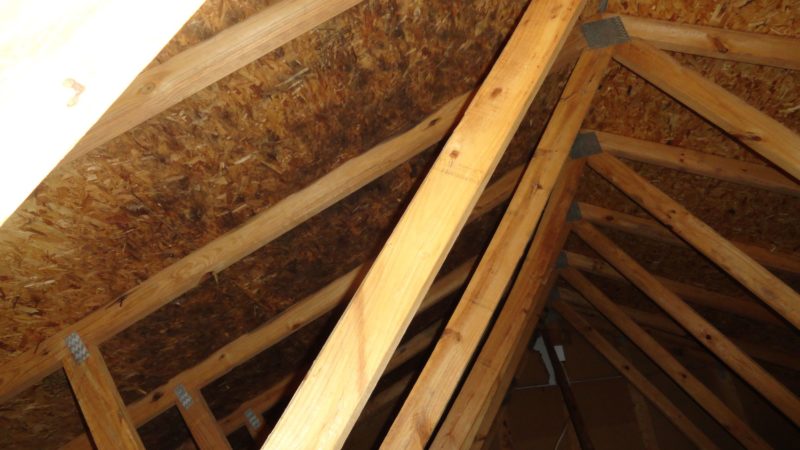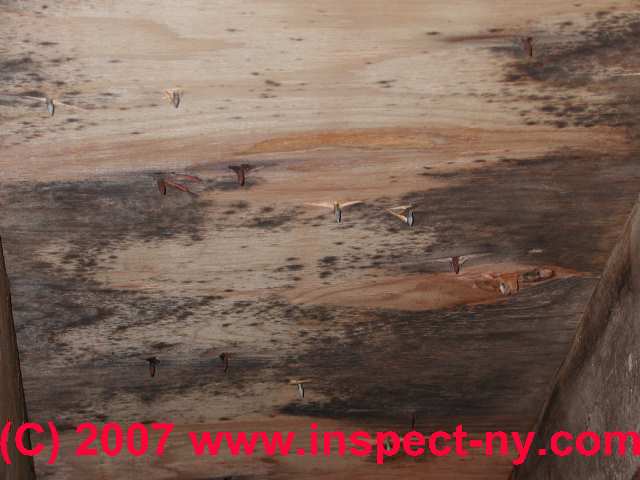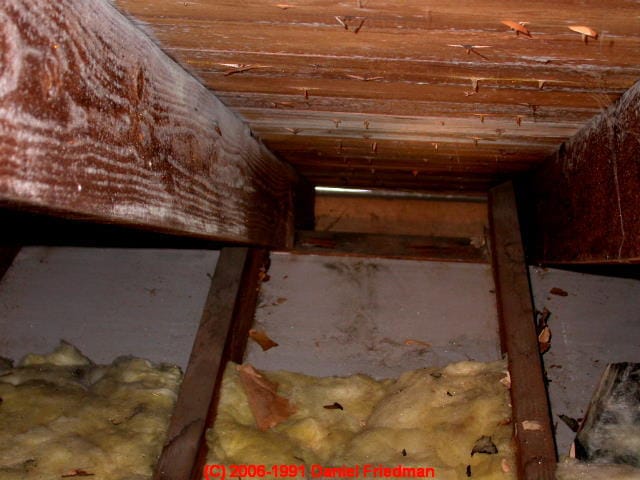Mold And Mildew On Plywood In Attic Roof

Attic spaces are one of the most common places in a home for mold to be found growing.
Mold and mildew on plywood in attic roof. I m aware of the cause poorly vented bathroom fans and not well sealed fan fixtures lights wires etc. In most attics there s an abundance of exposed wood and insulation on which mold can grow. Wooden beams and plywood may be affected and it can be difficult to remove all traces of mold from wooden surfaces. In the vast majority of cases the mold growth is caused by condensation.
Brown mold on plywood roof sheathing in an exposed to leaks or moisture problems is one of the most common molds spotted by home inspectors. The epa and other government agencies no longer recommend bleach for doing this. Often in attics we also find cladosporium sphaerospermum or aureobasidium pullulans which looks about the same or a little darker on plywood or framing. This occurs when the temperature of the sheathing drops below the dew point creating a thin layer of moisture on the substrate.
Combine 1 2 cup chlorine bleach. The fiberglass material in the insulation does not support mold growth but the paper backing does. Heating ventilation and air conditioning ducts may also be affected. Attic mold is due to poor ventilation roof leaks and hvac problems.
Mold on the underside of roof sheathing is also very common. The presence of mold in your attic is often the result of poor ventilation insufficient insulation moisture from a roof leak or improper venting from your bathrooms or kitchen. I have surface mold on the sheathing in my 1982 vintage 12 6 pitched attic. Bleach is corrosive and nasty to use and it kills only surface mold.
Mold growth on attic roof sheathing is a common issue in cool climates such as the pacific northwest. From the outsidethere are a couple of dips in the plywood which appear as though thes areas were loaded with shingles during re roof. Tea tree oil and white vinegar are both completely natural and safe for wood but have strong fungicidal properties. At the intersection of the plywood overlays the upper sheets contain black mold spreading about 2 3 up the slope.
In a cold climate poor ventilation of the attic space may lead to excess humidity as moist air from the warmer rooms below infiltrates into the cooler attic around plumbing pipes the attic hatch or even recessed lighting fixtures. Mold that grows on the underside of roof sheathing due to ideal mold growth conditions being present. Insulation is often affected. If you have mold in the attic we recommend consulting with a mold removal specialist because.
The most effective way to remove mold from hard porous materials such as wood rafters and plywood roof decking is to scrub it with detergent and water while wearing a dust mask and rubber gloves.




